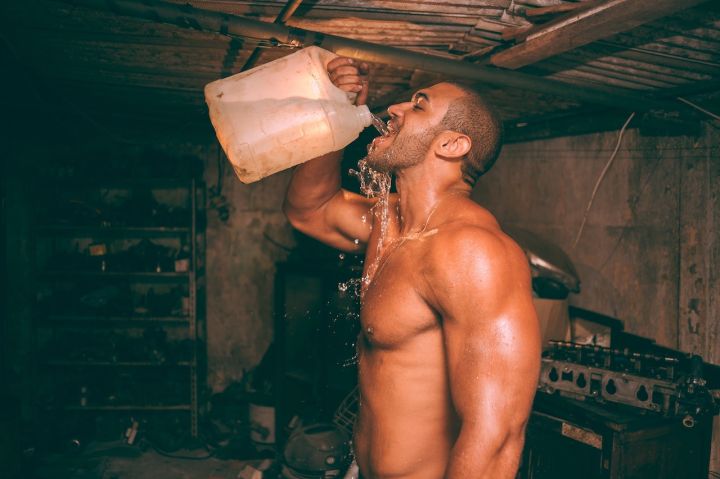The Power And Beauty Of The Show, You Must Understand The 8 Movements, Learn How To Appreciate The Bodybuilding Competition

In a bodybuilding competition, the participants constantly change their body posture according to the judges' requirements. Today we will talk about the 8 poses that must be shown in a bodybuilding competition, and of course there are other poses, but these are the ones that must be shown. Whether you are a spectator, or a participant should know these.
Demonstration movement 1: Forward extension of the latissimus dorsi

The anterior latissimus dorsi is the first of the eight mandatory display moves you must do in a bodybuilding competition. It allows you to demonstrate from the front the width of the latissimus dorsi, thickness of the chest, shoulder width, size of the forearms, mass and separation of the quads, and development of the anterior aspect of the calves.
Demonstration movement 2: Anterior biceps extension

The anterior extension biceps movement demonstrates the musculature of your arms, specifically the size and crest of your biceps. This movement also shows the size of your forearms, the width of your forelimbs, the size and condition of your quads, and the musculature of your calves.
Demonstration movement 3: Side extension chest

Side chest extension is a movement that shows the size and thickness of your chest from both sides. You can choose to pose from the right or from the left, depending on which side you feel more dominant. Whichever side you choose, you should first turn your body a little to one side and then to the other so that all the judges can clearly see your side boobs. In addition to the chest, this pose also shows the size of the shoulders, arms and forearms from the side, as well as the separation of the thighs and calf development.
Demonstration movement 4: Back extension of the latissimus dorsi

The back extension latissimus dorsi shows the width of your latissimus dorsi, the thickness of your obliques, the size of your arms from behind, the development and definition of your gluteal muscles, the size and separation of your biceps femoris, and the musculature of your calves from behind.
Demonstration movement 5: Backward extension of the biceps

The back extension biceps movement shows the size and distance of your arms from the back, specifically the mass and crest of your biceps. This movement also shows the thickness and contour of your back muscles, including your trapezius, infraspinatus, vastus lateralis, latissimus dorsi, and erector spinae. In addition, this movement shows the size of the calves from the posterior side, as well as the development and separation of the gluteus maximus and hamstrings.
Demonstration movement 6: Lateral extension of triceps

The side extension triceps movement shows your triceps, especially on the side you choose. Whichever side you choose to pose on, you should turn your body a little to one side and then a little to the other so that all the judges can clearly see your side triceps pose. It also shows the size of the shoulders and chest, the development of the lateral forearms, the separation of the thighs, and the development of the calves, all of which are shown from the side.
Demonstration movement 7: Positive abdominal and thigh extension

Positive abdominal and thigh extensions this movement demonstrates the development and separation of the abdominal muscles, external intercostal muscles, anterior serratus and quadriceps. It also shows the thickness of your chest, the size and width of your forearms and the size of your calves. Participants often do several variations of this movement. In the traditional orthostatic abdominal and thigh extension, the participant places his hands above his head and flexes his abs from the front. In another version of the movement, participants place both hands or just one overhead and then flex their abs from each side or just one side to better showcase the musculature and contours of their obliques and intercostal muscles.
Demonstration movement 8: Crab display

The crab display is the last of the eight mandatory moves you must complete in a bodybuilding competition. This movement shows overall muscle strength from the front, including the mass and separation of the upper obliques, shoulders, chest, arms, forearms, abdominals, quads and calves. You can show the muscles like a crab by placing your arms and hands on your abdomen. You can also do a variation by placing one hand on your side and placing the other arm on your abdomen.

In addition to these prescribed movements, bodybuilding exercises will also be performed in a free display.

